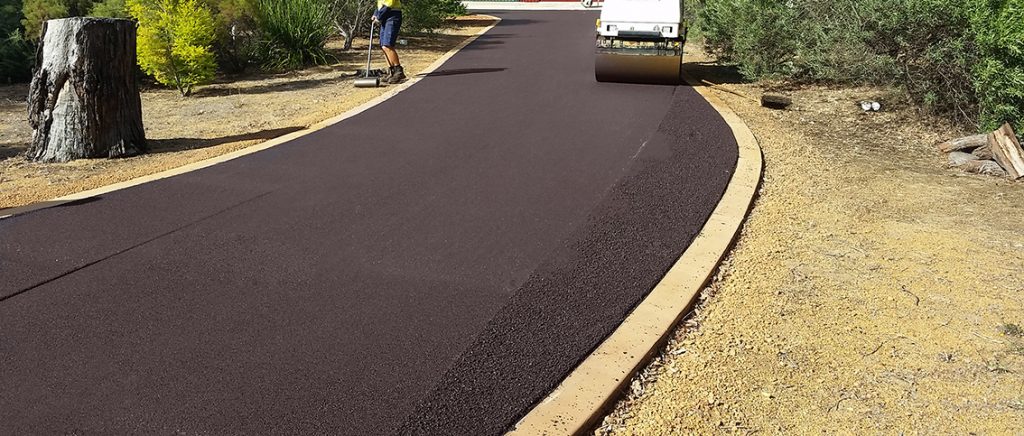Unlocking the Tricks of Hot Mix Asphalt Innovation
Exploring the midsts of hot mix asphalt modern technology discovers a world where accurate formulas and careful procedures merge to form our roads and framework. The combination of fillers, aggregates, and binders isn't merely a building task however a tactical orchestration of durability and performance.
Importance of Warm Mix Asphalt
Hot Mix Asphalt plays a crucial duty in modern framework development because of its durability and cost-effectiveness. As one of the most commonly utilized leading material for roads, freeways, and vehicle parking whole lots, Hot Mix Asphalt uses a series of benefits that add to its relevance in building jobs. One vital advantage is its capability to hold up against heavy traffic tons and rough climate condition, giving a reliable and lasting surface for transportation networks. In Addition, Warm Mix Asphalt is cost-effective in both initial construction and long-lasting upkeep, making it a preferred option for many facilities projects.
The resilience of Warm Mix Asphalt stems from its structure, which consists of aggregates, binder, and filler products that are very carefully selected and blended to meet details performance needs. Generally, the importance of Warm Mix Asphalt in infrastructure growth can not be understated, as it proceeds to be a cornerstone of modern-day construction techniques.
Components of Asphalt Mixes
The structure of asphalt mixes is composed of carefully picked aggregates, binder, and filler products that are essential for attaining specific efficiency needs. Aggregates are the key component of asphalt mixes, giving strength and stability. These accumulations can be natural, such as gravel or smashed rock, or synthetic, like recycled products from old sidewalks. The binder, generally asphalt or asphalt concrete, holds the accumulations together and supplies adaptability and resilience to the mix. The option of the binder is essential as it directly affects the mix's performance in various climate condition. Fillers, such as hydrated lime or Rose city concrete, are used to improve the mix's workability and aging resistance. Angled Parking.
The combination and proportion of these elements play a substantial role in figuring out the top quality and efficiency of the asphalt mix. Engineers carefully design the mix to satisfy certain needs, thinking about aspects like website traffic quantity, climate problems, and pavement life-span. Appropriate option and harmonizing of accumulations, binder, and fillers are necessary for creating resilient, lasting asphalt sidewalks.
Mixing and Manufacturing Methods

Once the aggregates are picked, the binder, typically asphalt cement, is included in bind the products together. The binder's quality and amount significantly affect the mix's strength, resistance, and flexibility to environmental elements. Furthermore, fillers like moisturized lime or Rose city concrete may be incorporated to enhance particular attributes of the asphalt mix, such as its workability or wetness resistance.
Throughout production, the aggregates and binder are heated up, commonly between 250-325 ° F(121-163 ° C ), to help with blending and guarantee proper finishing of the aggregates. The mixing process must be thorough to achieve a homogeneous blend that promotes the wanted efficiency qualities of the asphalt. Various methods, such as batch blending or drum blending, are utilized to achieve consistent and premium asphalt mixes for building and construction jobs.
Variables Impacting Asphalt Efficiency
Aspects affecting asphalt efficiency include a variety of variables that influence the durability, long life, and overall high quality of asphalt pavements. One essential factor is the high quality of materials utilized in the asphalt mix. The kind and resource of accumulations, the binder top quality, and the additives all play a substantial role in determining the efficiency of the asphalt pavement. The gradation of aggregates is crucial as it impacts the mix's workability, security, and resistance to fracturing and rutting.

Environmental conditions also affect asphalt efficiency. Temperature variations, moisture infiltration, and web traffic tons can all influence the architectural stability of the sidewalk. Design factors to consider, such as pavement thickness and drainage, are essential in ensuring the long-lasting efficiency of the asphalt pavement. By very carefully thinking about these elements, contractors and designers can enhance asphalt performance and boost the solution life of sidewalks.
Sustainable Practices in Asphalt Modern Technology

WMA allows for the production and positioning of asphalt mixes at lower temperature levels contrasted to conventional hot-mix asphalt, resulting in decreased power intake and greenhouse gas emissions. The use of permeable asphalt blends can assist reduce stormwater drainage concerns by permitting water to penetrate with the sidewalk and right into the ground, advertising all-natural water filtering and charge procedures.
Conclusion
To conclude, hot mix asphalt innovation plays a crucial role in modern facilities growth because of its sturdiness and cost-effectiveness. By meticulously balancing parts, utilizing appropriate blending strategies, and thinking about various elements, engineers can develop top notch asphalt blends that endure rush hour loads and harsh weather. Accepting sustainable techniques, such as making use of recycled materials and warm-mix innovations, further enhances the ecological friendliness of asphalt innovation.
Blending and production methods in warm mix asphalt technology include the accurate combination and processing of aggregates, binder, and fillers to create a high-performance and sturdy asphalt mix.Factors affecting asphalt efficiency encompass an array of variables that affect the resilience, long life, and general top quality of asphalt pavements. Sustainable practices in asphalt technology include various campaigns intended at decreasing the ecological impact of asphalt manufacturing and paving processes. By including redeemed asphalt sidewalk (RAP) and recycled asphalt shingles (RAS) into new asphalt blends, the sector can significantly reduce the consumption of raw materials and energy, while likewise lowering landfill waste.
WMA enables for the manufacturing and placement of asphalt blends at lower temperatures website here compared to standard hot-mix asphalt, resulting in reduced energy intake and greenhouse gas discharges.